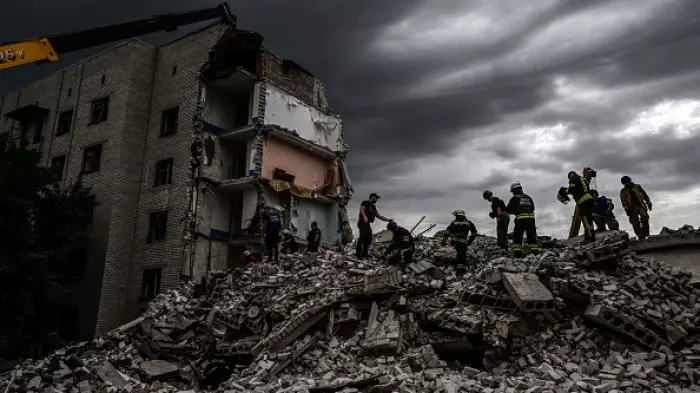Following the decision in early 2017 of former health minister Annette King not to stand in the next general election, David Clark was appointed the Labour party’s health spokesperson. In my then role as executive director of the Association of Salaried Medical Specialists, I was quick to arrange an early meeting.
Workforce, workforce and workforce
I emphasised that should Clark become health minister after the general election later that year, there were three things he needed to give immediate priority to – the first was workforce, the second was workforce, and the third was workforce.
I focused on workforce because it was already clear that district health boards (DHBs) were facing severe workforce shortages across the spectrum of health professionals – from medical specialists to nurses, to a range of other groups, including scientists and psychologists.
Regrettably, the future minister didn’t comprehend even one of these three priorities. But workforce was the most pressing crisis facing the health system and the prime driver of rising unmet health needs.
There were other crises, but I didn’t want to clog up his mind with too much information. I failed.
Worse still, current health minister Andrew Little has not comprehended it either, instead allowing himself or choosing to become dependent on external business consultants. This has led him to be distracted by restructuring and then, as a result, perpetuating the neglect of this inherited crisis.
Labour inherited severe workforce shortages from the previous National-led government, but its inaction has further worsened this crisis. In public hospitals, at least, we now have shortages across the occupationally diverse and skilled workforce of between one-in-five and one-in-four.
Not just workforce: major capital works
But it was not just a workforce crisis that Labour inherited. There are three others, beginning with major capital works.
Public hospitals were suffering from deteriorating buildings in part because they had been insufficiently designed for the long term.
Due to a short-term decision-making mentality at the central government level, future demand for hospital diagnosis and treatment had been often badly underestimated because of an assumed (and unproven) ‘magic bullet’ that would reduce this demand, which was often described as ‘new models of care’.
The process was that first, a DHB would prepare a business case for a recommended hospital rebuild for the health ministry to consider.
Once the DHB submitted the business case, its influence became increasingly marginalised.
The approval process was centralised in Wellington and top-down, leading to the original proposed business case being significantly downsized.
Further, once the much-reduced business case was finalised, the health ministry rather than the DHB was responsible for project-managing the rebuild.
Unfortunately, the government is not moving to address the main causes (additional to underfunding) of the capital works crisis.
The process takes far too long because it is excessively centralised, while those responsible for approving and project-managing hospital rebuilds have less relevant experience and expertise than those developing business cases.
The net result is that hospital rebuilds fell short of ensuring the capacity to meet existing and future patient demand. This led to a shorter life before the next rebuild than would otherwise be the case. The likelihood is that the increasingly more centralised health system starting on July 1 will worsen this situation.
Leadership crisis
The third inherited crisis was leadership culture. The more centralised decision-making is, the more likely it will be top-down, which increases the number of wrong decisions.
The engine room of experience and expertise for providing accessible quality healthcare and ensuring sustainable innovation resides much closer to the operational frontline, such as hospitals and general practices.
The more a DHB systematically engages with its clinical workforce, the better it performs. But the more this happens, the more it brings that DHB into conflict with the health ministry’s top-down culture.
This was dramatically highlighted by the leadership meltdown in the Canterbury DHB in 2020.
Unfortunately, the government does not get it. In fact, it has reinforced top-down central control even more than the preceding National-led government. Further, it has focused on restructuring as the way forward.
Medicines another crisis
Access to medicines was the fourth inherited crisis.
Medicines are a critical part of the core of so much of treating patients, improving their quality of life, and both extending and saving lives. But their importance is not just about morality and fairness.
Investing in medicines is also the fiscally prudent thing to do. Denying access to medicines does not necessarily mean saving money; these patients have conditions that still have to be treated but in a less effective way. For many, denial can also either delay or prevent people from returning to productive employment.
New Zealand has two critical agencies for ensuring medicine provision. The most well-known is Pharmac, which negotiates the provision of approved medicines with overseas pharmaceutical companies.
It is generally recognised that Pharmac does a good job (despite the need to improve transparency). Internationally it punches above its weight in negotiating with the powerful overseas pharmaceutical companies.
However, Pharmac is poorly funded, which prevents it from being able to make the difference necessary to significantly improve access to all the essential new medicines patients need.
The second agency, the regulator, is the lesser-known MedSafe.
MedSafe makes the call on whether a medicine should be approved for use in NZ.
Pharmac can’t do its work without this approval. But MedSafe is significantly understaffed to be able to take on the level of investigative work necessary to approve or reject a new medicine.
The downside of restructuring
The government has neglected these four inherited crises, allowing them to worsen. Why?
The answer is that it has allowed itself to be distracted because of its preoccupation with restructuring, without any evidence that this will lead to a better health system.
Primarily, this preoccupation is because it relied too much on the advice of business consultants rather than drawing upon the enormous amount of intellectual capital – clinical, professional and managerial – that's within the health system.
The Ardern government ignored the experience of the performance of business consultants over many years in the design, configuration and delivery of healthcare which was found to be underwhelming on a good day.
The inevitable outcome of this distraction led to continued government neglect of the crises facing the health workforce, major capital works, leadership culture, and medicines supply, to the extent that they have further deteriorated.
This is not a good inclusion on the CV of a former health minister.
What about the Budget?
Unfortunately, contrary to the hype, finance minister Grant Robertson’s fifth budget on 19 May gave little hope that the light he saw at the end of the tunnel for the health system was not a train coming in the other direction.
Partly this is because of what is not happening policy-wise outside the budget.
Health is labour-intensive. Consequently, its biggest spend needs to be on workforce, in order to address the severe shortages. This requires salaries and other employment conditions that are competitive internationally. But the failure to develop an effective workforce strategy to address this continues.
There's a significant increase for major capital works but, until the process of decision-making is improved, this existing crisis will continue.
The abolition of DHBs will also mean the virtual disappearance of the local voices and advocacy local populations need.
The increase in funding for Pharmac to buy new medicines is positive but still well short of what an economically developed nation should be providing.
Further, until the understaffing of MedSafe is resolved, Pharmac’s ability to put this increased funding to good use will be impeded.
But there are two other issues that impact negatively on whether health funding will make a qualitative difference to the effectiveness of the health system.
- The prevailing leadership culture from July is likely to be more bureaucratically centralised and top-down than now. Consequently, the risks of mistakes and ineffectiveness in spending decisions increases.
- While the main effect of the restructuring has been the distraction from addressing the crises facing the health system, there has been a further negative effect due to its rushed and inadequately thought-out nature.
When Health NZ replaces the DHBs on July 1, it will more resemble a scaffold than a structure.
It will have a chief executive but little of a senior leadership team.
Not only will none of its regional offices be functioning; their locations (and possibly number) remain unknown.
Those working in public hospitals will become HNZ employees but have little idea of who they're accountable to beyond their hospital.
In other words, there'll be a leadership vacuum resembling a headless chook for some time.
What better way to ensure the ineffectiveness of increased health spending and the continuation of the crises facing the health system.














